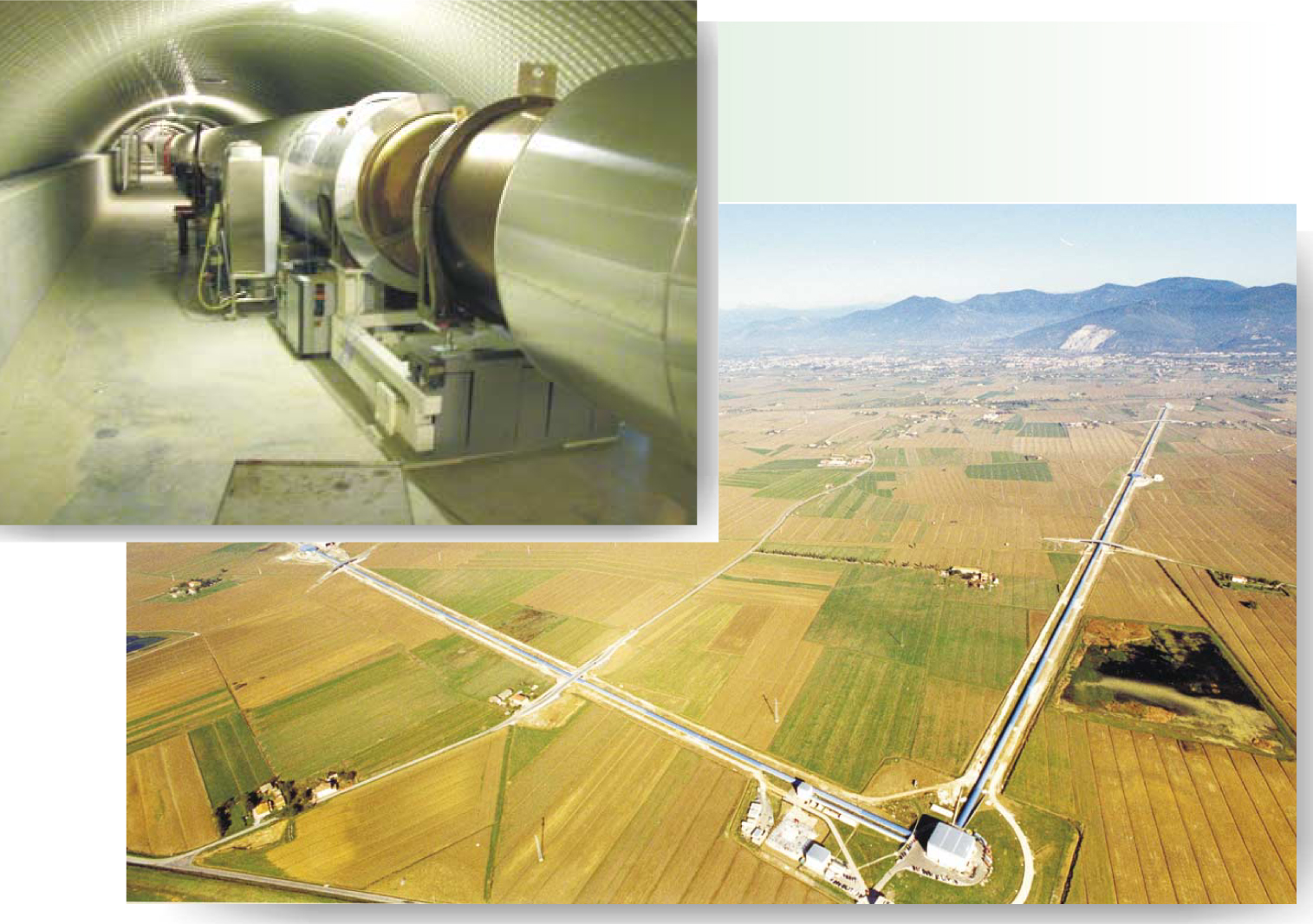Virgo Gears Up to Wait for Gravitational Waves
DOI: 10.1063/1.1620827
The latest detector to join the hunt for gravitational waves is the €76 million ($86 million) Virgo, an Italian-French collaboration near Pisa that celebrated its inauguration and started testing at the end of July. “The curious thing is, these detectors do classical physics experiments, yet—as a network—they can get quantum mechanical information about the graviton’s spin,” says Barry Barish, director of the Laser Interferometer Gravitational Wave Observatory (LIGO), a similar US project (see the article by Barish and Rainer Weiss in Physics Today, October 1999, page 44
Virgo, like LIGO, is a Michelson–Morley interferometer. Virgo’s two perpendicular arms are each three kilometers long; LIGO’s two interferometers have arms four kilometers long. A laser beam is split and sent down both arms, reflected, and later recombined. An impinging gravitational wave would, by nudging the end mirrors outward and inward, stretch one arm and squeeze the other. The difference in the path lengths introduces a phase shift, which in turn affects the interference pattern and reveals the traces of the gravitational wave.
Gravitational waves are ripples in spacetime caused by accelerating masses. They have never been directly observed but have been inferred from observations of a binary pulsar whose period of rotation is shrinking at a rate consistent with losing energy through gravitational wave radiation. A gravitational wave from a local galactic supernova explosion, for example, might move the Virgo mirrors by 10−18 meters, says Adalberto Giazotto, the detector’s scientific coordinator. One aim, he says, is to pick up signals from the Virgo cluster of galaxies, which is about 1000 times farther away than the edge of our galaxy.
The experiment’s virtue is its isolation from seismic noise: Fancy compound pendulums housed in 10-meter-tall towers isolate Virgo’s optical components. The resulting sensitivity at low frequencies, down to about 10 Hz, is advantageous for observing dynamic processes. “Take the coalescing binary system of a neutron star,” says Giazotto. “It goes faster and faster as it coalesces. But if you can start observing when the frequency is lower, it gives you a longer observation time.” LIGO can detect signals only as low as about 50 Hz, but with interferometers in Hanford, Washington, and Livingston, Louisiana, says Barish, “we have the advantage of doing a coincidence [measurement].” The LIGO team plans to upgrade their experiment’s sensitivity at low frequencies.
The plan is to eventually link the various gravitational wave interferometers to form a global network. A German–British team is working on a 600-meter interferometer called GEO; Japan’s 300-meter TAMA was the first gravitational wave interferometer to come on line, in 1995; and Australia has one in the works. Says Giazotto, “A network operation of all the detectors will increase the true detection of gravitational waves and pinpoint their origins.”

Virgo (below) is poised to search for gravitational waves. The view down one of Virgo’s arms is shown at left.
VIRGO COLLABORATION

More about the Authors
Toni Feder. American Center for Physics, One Physics Ellipse, College Park, Maryland 20740-3842, US . tfeder@aip.org
